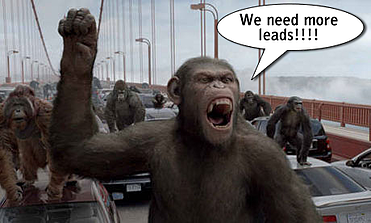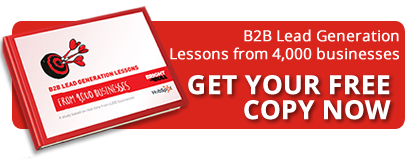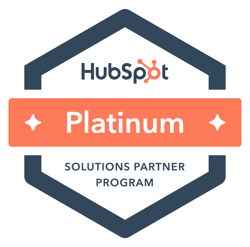There has been a very interesting discussion going on in the "B2B Marketing" LinkedIn group around the topic of how many times to email or call a lead before it's considered dead.
For me it's one of those questions that just doesn't have a straight forward answer - so here goes with the detail.
In my eyes, the first fundamental issue is what is the definition of a "lead".
The old way to define and approach a lead in B2B Marketing
Anyone on your company database, or data that meets a certain demographics/firmographics quite often was considered a lead. Pretty vague right?
Then we got a little more specific with defining "warmer" leads - contacts gathered at a tradeshow or conference; clickthroughs from an email campaign; an external marketing list, maybe from a sponsor or list broker.
Marketing may send out some campaigns to these lists - but at some point they'll be passed on to sales for the perfect pitch and ideally conversion! The challenge B2B marketers have, is often we hear Sales sing the "those leads weren't great - they're all dead - we need more leads" tune. When we're all up against targets and pressing deadlines, rather than getting smart about how we define, engage and nurture a lead, marketing tend to rush off to gather new leads from database pulls, list brokers and probably send out another bunch of emails in the hope of fresh names to call... and so on. The cycle starts once again.
This methodology kicked around for a long time and to be fair it's worked - but finally companies have wised up to the fact we have to work more intelligently than this "mass massacre of leads" approach.
The new way to define and approach a lead in B2B Marketing
The definition of a lead is unique to your business, and there will be different definitions that will dictate what to do with them and who will deal with them. This is the breath of fresh air inbound marketing approach.
All leads have a life cycle - so not all the contacts on your database are leads and not all are ready for the sales teams to get their hands on.
The key is marketers should only pass on leads to sales that meet specific criteria. Yes this is likely to mean less quantity of leads, but the quality and lead conversion rate will greatly increase.
A B2B organisation will have the following types of database contacts:
Subscriber
Think of subscribers as those who know about you and have opted in to hear from you periodically. In many cases your subscriber base is the segment of your contacts database that has only signed up for your blog or newsletter and nothing else.
Lead
Leads have shown more interest in what you offer than subscribers have. Typically a lead has filled out a form with more than just an email address, often for some sort of content-based offering on your website. Any particular list you obtain through other marketing activities will be called a lead. They are seen as "top of the funnel" leads.
Marketing Qualified Lead (MQL)
MQL's are those people who have raised their hands and identified themselves as more deeply engaged than your usual leads - they're sales-ready leads but who have not yet become fully fledged opportunities. Ideally, you should only allow certain, designated forms or attributes to trigger the promotion of a lead to the MQL stage, specifically those that respond to "bottom of the funnel" offers like demo requests, buying guides, event brochures, and other sales-ready calls to action.
Sales Qualified Lead
Sales Qualified Leads are those that marketing and sales have agreed and defined as worthy of a direct sales follow up.
Opportunity
Opportunities are contacts who have become real sales opportunities in your CRM.
Customers
This is everybody’s favorite lifecycle stage: an actual, paying customer.
Now how many times should they be contacted before they will be considered dead?
This is where I think a lot of organisations might be going wrong - focusing on the "how many" calls or emails as opposed to the "quality" of communications.
Based on the new inbound marketing way, instead of seeing unresponsive leads as "dead" they need to be seen as "not ready to buy yet". They simply go back to a different stage in your sales funnel to be nicely nurtured.
Through a smart lead nurturing process, you should have a series of engaging touch points with the leads. Don't get so caught on how "how many times" or for "how long". So long as you don't sell sell sell in your marketing communications, you shouldn't run the risk of killing your leads (unsubscribes). Through remarkable and engaging content you will ensure that you are top of mind when they are ready to buy your product or service, ensuring they pick yours instead of the competition.
So create a lead process that delivers value and engages your prospects and agree a trigger point that will allow sales to follow up with their calls. Whether it takes 5 emails and 2 calls or 50 emails and no calls.. the point is to stay on top of mind, so when your prospects are ready to buy, you'll be at the top of their list!







Do you have any comments?